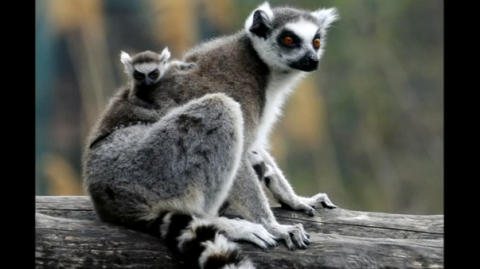
VIENNA, Austria (Reuters) — Lemurs hum to protect them from predators and increase social cohesion within their troop, according to a Canadian primatologist.
Research carried out by Laura Bolt, from University of Toronto Mississauga, could help future studies on how ancient human ancestors socialized with each other.
During her five-month stint at the Beza Mahafaly Special Reserve in southwest Madagascar Bolt studied two specific vocalizations – “moans” and “hmms” produced by male ring-tailed lemurs, the lowest ranking members of the female-dominant troop structure.
Ring-tailed lemurs make 22 different vocal sounds and Bolt recorded many of these to test their role in social cohesion.
The primates spend their days moving through the tree canopy or along the forest floor, making them vulnerable to predators such as harrier hawks, feral cats and dogs, and fossa.
Their contact calls are believed to help individuals track other troop members of the troop, to increase safety.
“These results further our understanding of how ring-tailed lemur vocalizations may function to keep social groups together,” said Bolt.
“We found that male ring-tailed lemurs used both moan and hmm calls to maintain proximity to their nearest neighbor. They performed both vocalizations at higher rates during behaviours that could lead to separation from group members.”
She added: “Social lemurs are the living primates most like our early ancestors. Patterns of individual and sex-specific call usage are still poorly understood. Gaining a better knowledge of how group-living lemur species use contact calls helps to inform our understanding of the evolution of primate cognition.”
The research was published in the journal Ethology.







